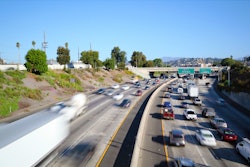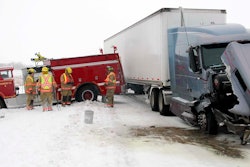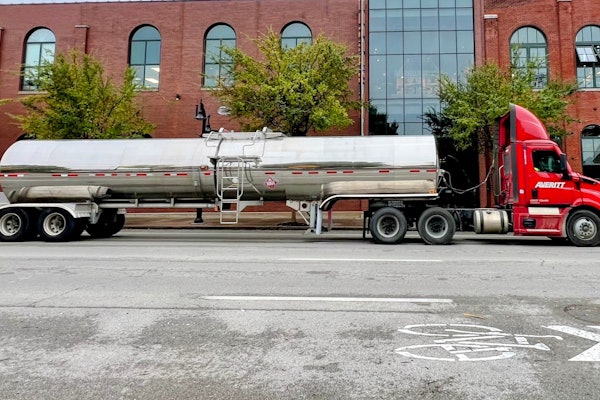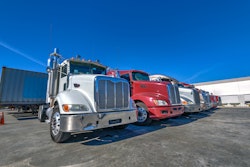Trucking news and briefs for Tuesday, April 15, 2025:
Massachusetts gives manufacturers flexibility on ACT enforcement
The Massachusetts Department of Environmental Protection (MassDEP) on Monday announced it will exercise enforcement discretion for manufacturers that are unable to meet minimum electric truck sales required under the Advanced Clean Trucks (ACT) program.
Manufacturers that cannot meet the sales requirements of the program will receive relief for Model Years 2025 and 2026, provided they make internal combustion engine (ICE) trucks available to distributors seeking them. This approach gives manufacturers more flexibility and eases the challenges dealers are facing, while keeping the state on track to achieve critically important emissions reductions, MassDEP said.
[Related: CARB amends Advanced Clean Trucks regulation]
Under the ACT program, manufacturers are required to achieve a certain level of electric truck sales as a percentage of their overall sales. That percentage gradually increases year over year. Manufacturers can average those sales over time and buy and sell credits to meet those requirements. The rule has been adopted in 11 states, including Massachusetts.
In addition to making ICE trucks available to dealers, manufacturers must continue investing in their manufacturing and distribution networks to ensure a smooth transition to electric trucks.
[Related: Bills in Congress seek elimination of CARB's ZEV mandate for trucks]
Amazon launches LTL service for inbound shipping
Amazon Freight announced Monday it is now offering less-than-truckload (LTL) services to customers shipping inbound to Amazon’s facilities.
The company said the move is “a cost-effective way to get your smaller loads to Amazon facilities without sacrificing reliability.”
If shippers have a shipment that won’t fill an entire trailer, they can now book a portion of the trailer depending on how much space is needed.
“We have been listening closely to our customers and understand their desire to have more ways to move their freight,” said Ari Silkey, General Manager of Amazon Freight. “With LTL, they are now getting access to Amazon’s trusted infrastructure and cutting-edge technology to move more of their loads into Amazon’s fulfillment centers.”
Shippers can access Amazon Freight LTL by logging into the portal, where they can get quotes for shipments 14 days out, compare FTL and LTL options side-by-side, and track the status of loads. The portal also allows shippers to manage shipments and save time with simple billing, invoicing and online payments.
At this time, Amazon Freight LTL is only available to customers shipping inbound to Amazon’s fulfillment centers.
NTSB details facts of fatal I-35 pileup
The National Transportation Safety Board (NTSB) has released its preliminary report on a March 13 fatal crash involving a tractor-trailer pulling an Amazon drayage container.
According to NTSB’s timeline of the crash, a 2016 Volvo VNL and 2022 CIMC intermodal container chassis operated by ZBN Transport, and driven by Solomun Weldekeal Araya, was traveling Southbound along I-35 near milemarker 254.4 in Austin, Texas.
 This aerial view of the crash site on I-35 shows the tractor-trailer at its final rest position. Other crash-involved vehicles can be seen within the roadway behind the combination vehicle.Austin Police Department; annotated by NTSB
This aerial view of the crash site on I-35 shows the tractor-trailer at its final rest position. Other crash-involved vehicles can be seen within the roadway behind the combination vehicle.Austin Police Department; annotated by NTSB
The truck was traveling in a long-term work zone and encountered a traffic queue that had formed because of lane closures that were about 0.4 miles south within the work zone.
“The driver of the combination vehicle did not stop as he approached the slowing traffic ahead and collided with the rear of a 2013 Volkswagen Jetta passenger car and a 2006 Chevrolet Silverado pickup truck at the end of the queue,” NTSB said.
Following the initial collision, the tractor-trailer continued into the backup for about a tenth of a mile, causing 13 other vehicles in the queue to be involved in the crash.
A 2.2-mile short-term work zone was established within the long-term work zone for an overnight pavement resurfacing project, which began at 9 p.m. on March 13 and was scheduled to end at 3:30 a.m. on March 14. The speed limit along this section of I-35 was originally 70 mph, but the work zone speed limit was lowered to 60 mph.
As a result of the crash, all four occupants in the passenger car and one passenger in the pickup truck were fatally injured. The other two occupants of the pickup truck and the other occupants in the crash-involved vehicles reported various injuries ranging from minor to serious. The driver of the tractor-trailer was uninjured.
All aspects of the crash remain under investigation while the NTSB determines the probable cause, with the intent of issuing safety recommendations to prevent similar events. Investigating the crash with NTSB are the Federal Motor Carrier Safety Administration, Texas Department of Transportation and Austin Police Department.













